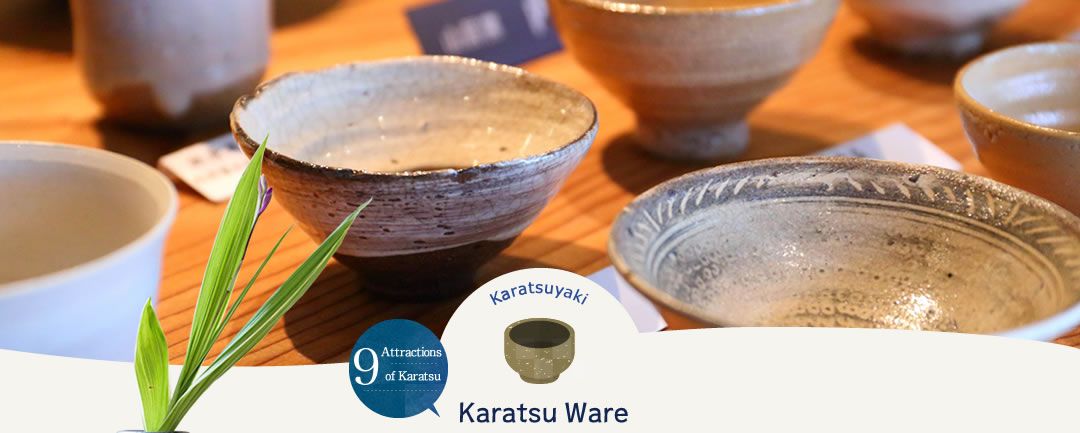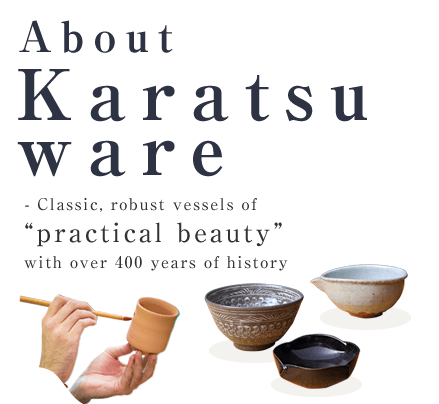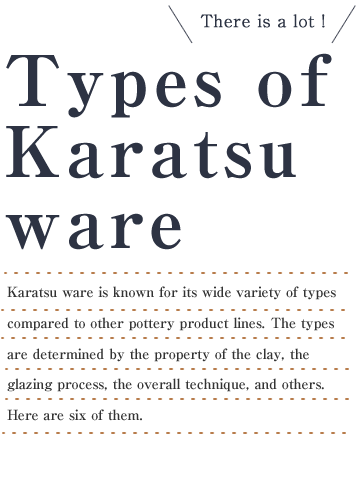Traditional ceramic art of Karatsu ware dates all the way back to the Momoyama period. According to recent studies, this work of artistry with such long history first took place in 1580 on the domain premises of the Hata clan, the ruling family in Kishitake Castle. Karatsu ware vastly increased production following the integration of a new porcelain making technique introduced by a Korean potter who came to the country in the wake of the Japanese invasions of Korea by Toyotomi Hideyoshi.
The highly acclaimed ceramics shipped right form the Port of Karatsu would eventually be called “Karatsu-mono” as it spread all across western Japan including Kyoto and Osaka. As a traditional saying goes “ichi-raku ni-hagi san-karatsu,” Karatsu ware was able to quickly established its name and place among the tea community as one of their most beloved bowls and pottery line, even then.
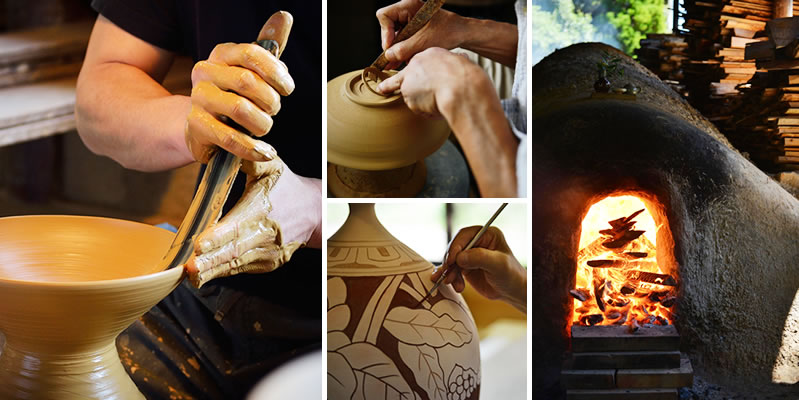
It was once protected and beloved as the domain-designated ceramics in the Edo period though, Karatsu ware disappeared from the eyes of the public in the beginning of the Meiji era. The ancient technique of Karatsu pottery making developed during the Momoyama and Edo periods was then revived and brought back to life by the hands of Living National Treasure Muan Nakazato (1895-1985). A steady increase of creators has resulted in approximately 70 kilns existing here today in Karatsu City, as some of the most creative and modern works coming from the up-and-coming generation of Karatsu ware producers.
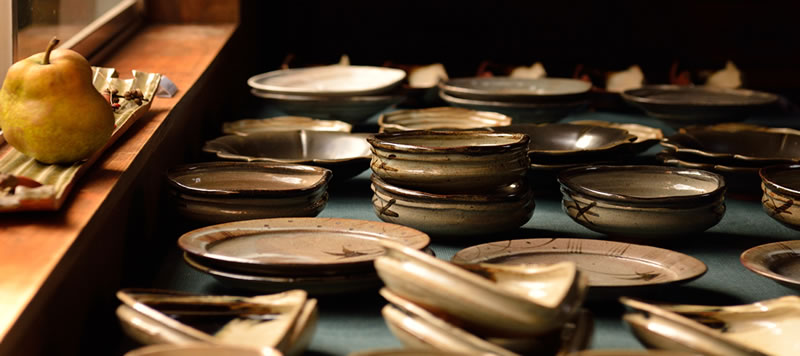
Karatsu ware is a type of ceramics also referred as “tsuchi-mono.” Created with rough and coarse clay, it is often characterized by its simple and robust appearance. It continues to lure fans regardless of time and age, nonetheless. Although it initially began as just a tea bowl, Karatsu ware of the modern day offers a wide variety of products for everyday life. One of the most attractive features of Karatsu ware product line is its practicality. The saying goes, “80% creator, 20% user”- meaning the product is only complete when a user uses it to serve his/her dish or drink in it. As of late, Karatsu ware has become a highly popular vessel for drinking sake as well.
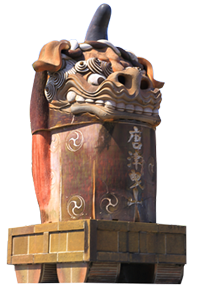
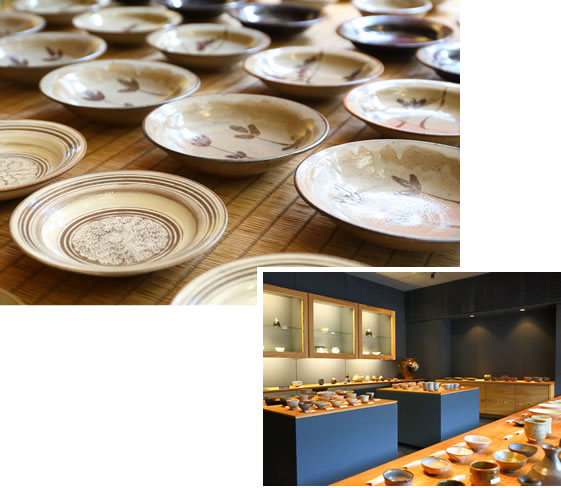
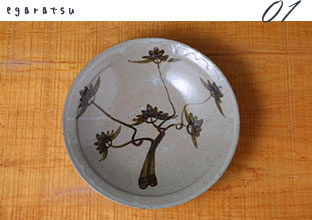

Karatsu ware said to be the country’s first earthenware featuring art designs. The characteristic of Egaratsu is the artwork applied with liquid iron and coated with glaze prior to being fired in the kiln. It is one of the most iconic styles of Karatsu ware and is commonly seen in many bowls. The overall motif features trees, plants, flowers, and birds along with a variety of elements.
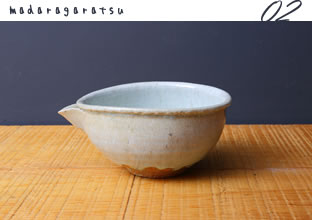

Madaragaratsu utilizes glaze mixed with ashes from straw. This creates blue and black speckles on the surface due to its iron content and the pine ash melting during firing. Started in the end of the 16th century, this is a long-standing, traditional type of Karatsu ware.
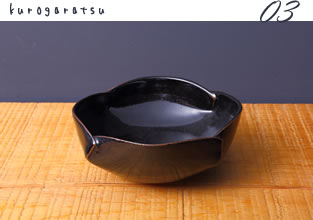

This type of Karatsu ware is created with glaze with high iron content. The degree of the shade would depend on the amount of the iron and acidity. Some are light brown to brown, whereas some are deep black. Regardless, all together, they are in general called Kurogaratsu.
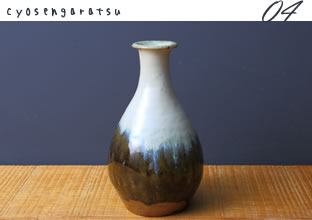

This particular type is created with an iron glaze and an ash glaze simultaneously. The two would mix and melt together under the fire – and this is fun to watch. Commonly, the darker iron glaze is applied first to the pottery, and then the milky white ash glaze is later poured slowly from the top.
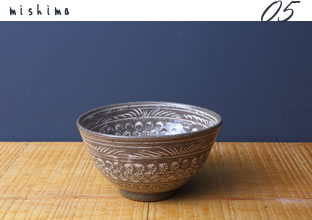

This is a technique passed down from Mishima in Korea during the Kingdom of Joseon era. Flower patterns and weave patterns are applied while the earthenware is still semi-dry. Engobe and glaze will then be applied prior to firing. This particular style of production began in Karatsu during the Edo period.
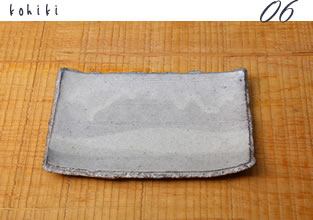

For this particular style, white-color engobe and ash glaze are applied while the brown clay is still wet and semi-dry. This was a long-used technique in Korea for ages; however, Karatsu had never implemented it until just recent years.

